 |
| Overclocking Results: |
|
|
Intel's Core i5 processors slip into a new class of
motherboards with 1156-pin CPU sockets, follow in AMD's integrated memory
controller footsteps and take on much of the responsibilities previously
relegated to the motherboard's northbridge chipset. In other words, a lot has
changed. Overclocking methodologies change along with CPU architectures, but
this time around the good old Front Side Bus is nowhere to be seen, replaced by
a similar number called BCLK - base clock. Architectural CPU changes bring about
new challenges, new possibilities and of course, new overclocking potential!
PCSTATS is still finding its feet with Core i5
overclocking, but from what we're seeing the choice of motherboard plays an
important role, as always.
Before the Core i5 750 overclocking commenced, PCSTATS
installed two sticks of 2GB Corsair CMD4GX3M2A1600C8 DDR3 RAM into the Gigabyte
GA-P55-UD3R motherboard. High quality, low latency memory is the cornerstone of
a successful overclocking attempt, and Corsair is among the best performance
memory makers out there.
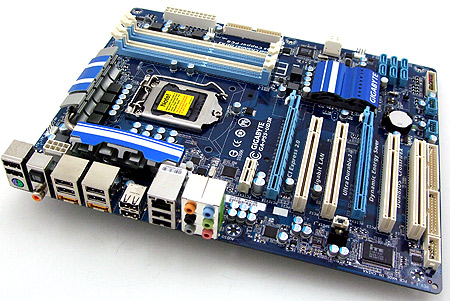 The Corsair CMD4GX3M2A1600C8
memory was set to run in DDR3-800 MHz mode, so as not to hold the CPU back. All
CPU speed throttling options were disabled in the GA-P55-UD3R BIOS, including
C1E state, and Speedstep/EIST. The standard Intel reference socket 1156 heatsink
was used for cooling.
The Corsair CMD4GX3M2A1600C8
memory was set to run in DDR3-800 MHz mode, so as not to hold the CPU back. All
CPU speed throttling options were disabled in the GA-P55-UD3R BIOS, including
C1E state, and Speedstep/EIST. The standard Intel reference socket 1156 heatsink
was used for cooling.
We adjusted the Core i5 750's CPU multiplier down to
12x, the base clock was then slowly increased from 133MHz towards 200 MHz. The
GA-P55-UD3R motherboard's BCLK was successfully raised in 15 MHz increments.
Moving to 150MHz and then 175MHz BLCK proved to be no
problem. From there we sped through to 200MHz and then 215MHz before crashing
when loading Windows Vista. The board finally came to a rest at an overclocked
BCLK speed of 210MHz.
Of course, even if you don't overclock your processor
manually, you can still take advantage of the Core i5 750's large amounts of
headroom through enabling Turbo Boost or Gigabyte's Smart Boost utility.
Inside the BIOS - OC and
Memory Tuning Options
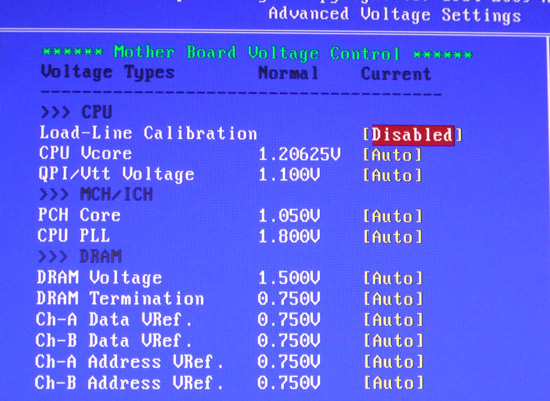
Voltage tuning is just as important as ever when
overclocking or tweaking Intel's socket 1156 processors. Gigabyte's GA-P55-UD3R
allows pretty much every element of the chipset and processor to be overvolted.
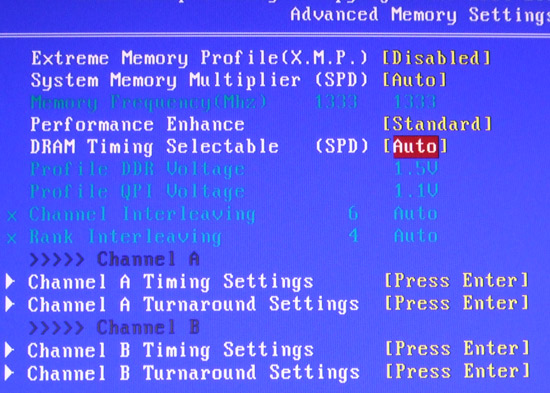
While it's the Intel Core i5 (or Core i7 800-series)
processor controlling the memory instead of the Intel P55 Express chipset,
settings are are still adjusted through the BIOS. The board has support Intel
Extreme Memory Profiles, which can load more aggressive memory timings for
supported memory sets.
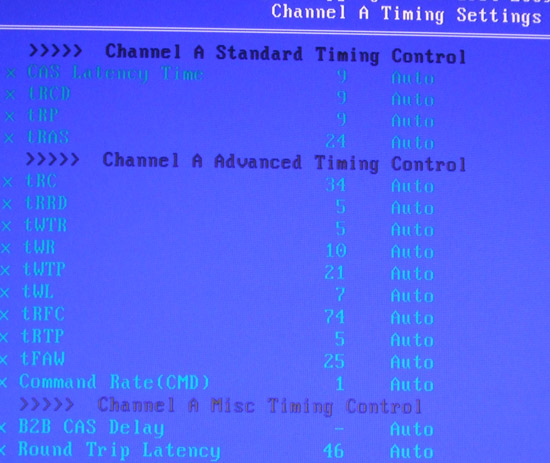
Memory settings can be adjusted down to the cycle, which
makes it easy to push your memory performance to the absolute limit.
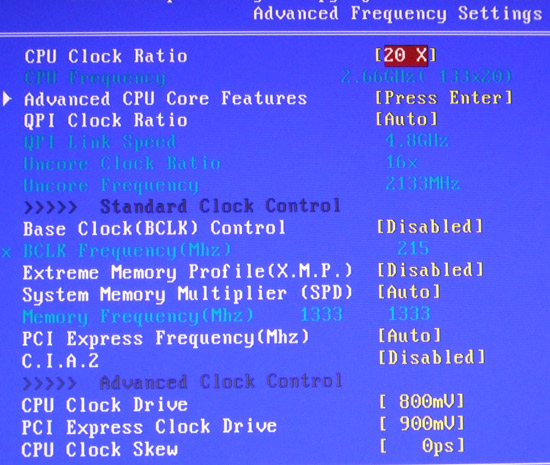
CPU overclocking has changed a little from the days of
adjusting the FSB, but it's still possible. By adjusting the base clock (BCLK),
the overall frequency of the processor will increase as well.
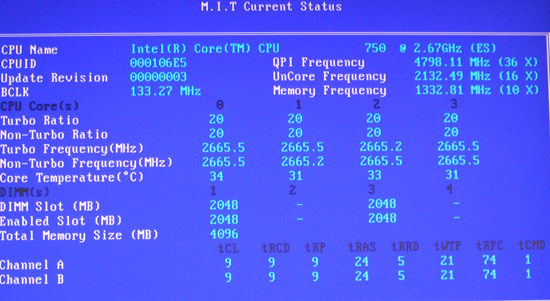
This status page gives an overview of Gigabyte's
GA-P55-UD3R's overall settings so you can what speeds, ratios and timings the
system is running at a glance.
With the BIOS covered, let's get ready to see how the
Gigabyte GA-P55-UD3R really performs...
